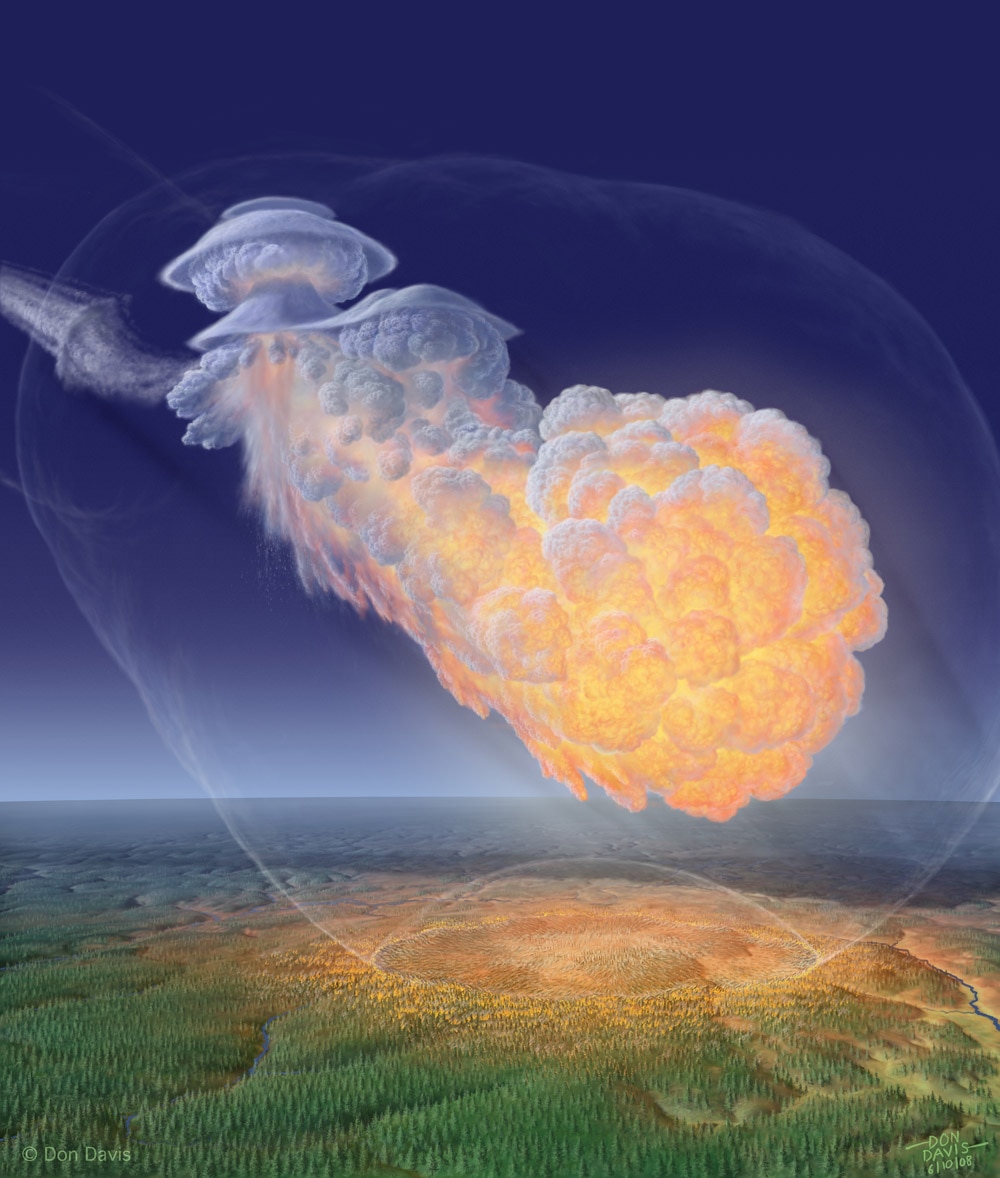Create a free profile to get unlimited access to exclusive videos, sweepstakes, and more!
100 years ago today: KABLAM!!!!!
100 years ago today, a small chunk of rock or possibly ice was lazily making its way across the inner solar system when a large, blue-green planet got in its way.

A note: An article is in USA Today about the topic of this post, and I'm quoted in it.
100 years ago today, a small chunk of rock or possibly ice was lazily making its way across the inner solar system when a large, blue-green planet got in its way. Traveling roughly westward, it entered the Earth's atmosphere moving at tens of thousands kilometers per hour. Compressed and battered by tremendous forces, the object got about 5 - 10 kilometers from the ground before it succumbed, exploding like a gigantic multi-megaton bomb.
The air blast flattened trees for hundreds of square kilometers. The ground shook, witnesses felt the hellish heat from kilometers away, and the shock wave circled the world. It happened over the remote Podkammenaya Tungus river, a swampy region in Russia; had it happened over Moscow a million people might have died within minutes.
Now known as the Tunguska Event, it stands today as a shocking reminder that we live in a cosmic shooting gallery, and the Earth sits in the crosshairs of many objects.
The event has been studied extensively. An expedition to the region revealed no crater, to the surprise of those early 20th century scientists. This was the first clue that it was an air blast. No debris has ever been conclusively identified as extraterrestrial, leading to some debate over whether it was a rocky asteroid or an icy bit of comet. Some asteroids are like rubble piles, pulverized by impacts as they orbit the Sun; these are fragile objects that would more easily explode in the air. I've often wondered if this would explain the situation.
The past century has seen many changes in the way we do astronomy, and how we hunt for dangerous rocks. Automated surveys scan the heavens, tirelessly looking out for bullets with our name on them. Astronomers model the impactors and impacts, looking for ways to understand them better. Scientists propose physically going to asteroids with robotic and manned missions, to get far better data on them.
All of this is more than just scientific curiosity: our survival as a species may depend on it. And that's no exaggeration.
So I congratulate those who study these killers, and who look to our future -- and here I will call out my personal friend Dan Durda who is very concerned indeed, and has devoted his career to them. I applaud the B612 Foundation, which is devoted to mitigating this danger. And I especially stand up and point to Congress -- including my own Representative Mark Udall -- which has the foresight to mandate that NASA look into the dangers from the Near Earth Asteroid Apophis. I wrote about this extensively in my book Death from the Skies!, and I learned far more than I wanted to about what happened over Tunguska. I'm very glad others are taking this threat seriously.
We've come a long way since that hot, muggy Russian morning on June 30, 1908. And let's be clear: if another Tunguska-class object had its sights set on us, we wouldn't know it until we, like those Russians, saw a flash of terrible light in our sky, felt the burning heat, and were knocked down by the blast.
The odds of it happening any time soon are low, very low. I don't lose any sleep over it -- I'm not worried, I'm concerned. But this anniversary is a sobering reminder that it can happen again, and it will, unless we do something about it.
Artwork credit: the fantastic space artist Don Davis. Used by permission.















